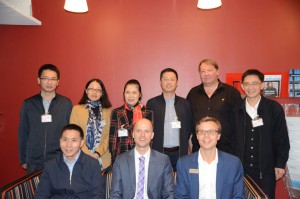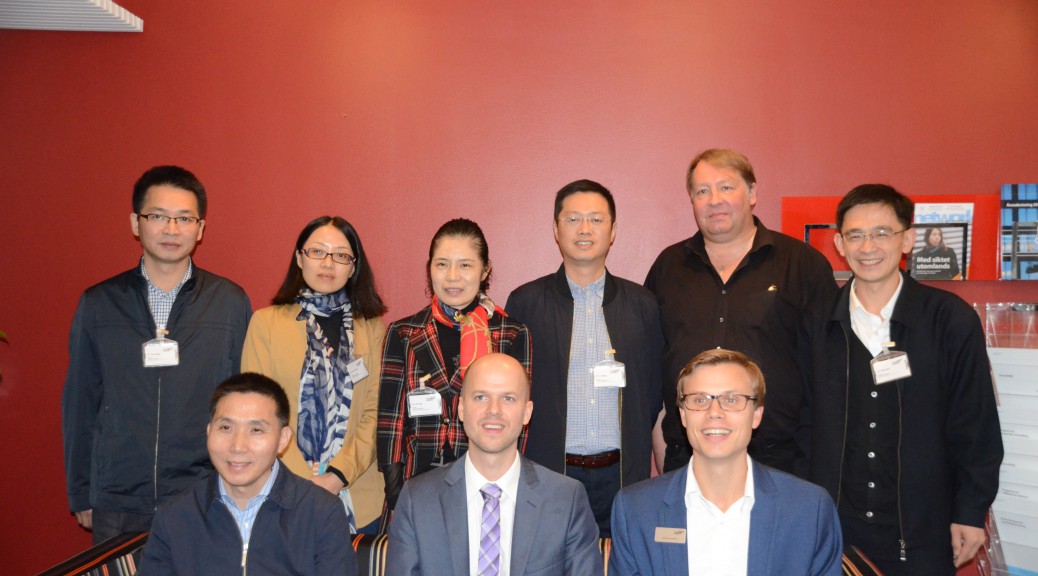By Xuefei Chen Axelsson
Stockholm, Sept. 21(Greenpost)–Zhejiang Hangzhou Jianggan District Delegation has visited Swedish Agency for Economic and Regional Growth.
 Jacob Bemgård, Financial Officer for Enterprise Europe Network in Sweden, Henrik Arwidsson, Project Manager for Business Support and Stefan Nordin Project Manager from Tillväxtverket gave a brief introduction about Swedish overall industry and trade, Voucher for Internationalization, Enterprise Europe Network and the cooperation product web page www.verksamt.se.
Jacob Bemgård, Financial Officer for Enterprise Europe Network in Sweden, Henrik Arwidsson, Project Manager for Business Support and Stefan Nordin Project Manager from Tillväxtverket gave a brief introduction about Swedish overall industry and trade, Voucher for Internationalization, Enterprise Europe Network and the cooperation product web page www.verksamt.se.
The six member delegation was impressed by Swedish way of helping SME’s to develop and to go abroad.
Cai Jianyun, Vice Mayor of Jianggan District Government in Hangzhou, Zhejiang Province said he welcomed Swedish Game’s industry to go to his district because it is located in a very important area where there is good conditions for game’s development.
Cai said he was also impressed by Swedish measures to take care of gender equality and equality in general for both Swedish residents and immigrants. Back in Chinese cities like Hangzhou, there are also many rural immigrant workers working in the cities, but their children cannot enjoy the same treatment as the urban residents’ children. This is something they are going to strive for.
They also welcome Swedish enterprises to settle down in Jianggan for Swedish export to China or Chinese export to Sweden.
Cai said the purpose for their visit is also to improve mutual understanding and establish important contacts for the future.
According to Henrik Arwidsson, Sweden has made good use of its own resources, for example the cold climate can be turned into hot business, one good example is that Facebook’s computers and Data center is located in northern city Luleå. Sweden has been investing in music since long time ago, so there has been famous bands like ABBA , Roxette and many others. In recent years, the Game industry such as Minecraft is prosperous. And these are all for export. Let alone they also supported green tech companies to export.
Tillväxtverket also directly gave SMEs grants for development and export.
 瑞典地区经济增长署的财政协调官雅各布.贝姆购德(Jacob, Bemgård),和项目官员亨利克,斯蒂芬一起接待了中国客人。
瑞典地区经济增长署的财政协调官雅各布.贝姆购德(Jacob, Bemgård),和项目官员亨利克,斯蒂芬一起接待了中国客人。